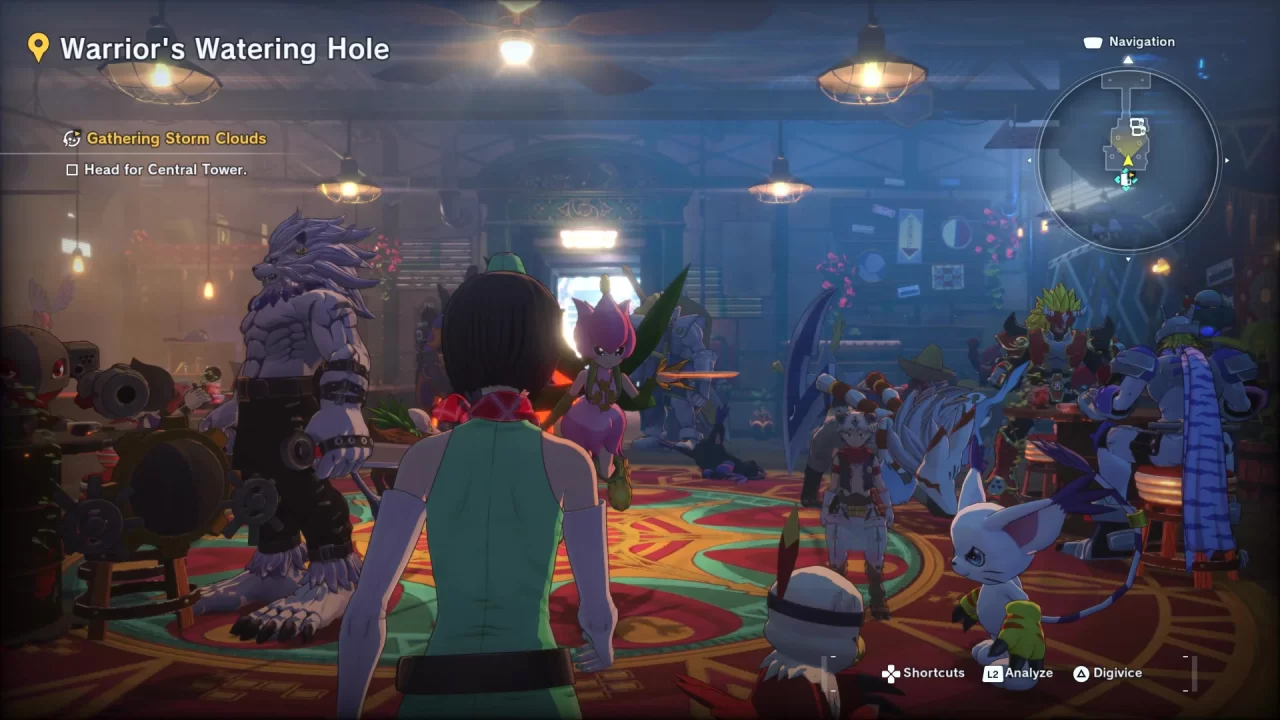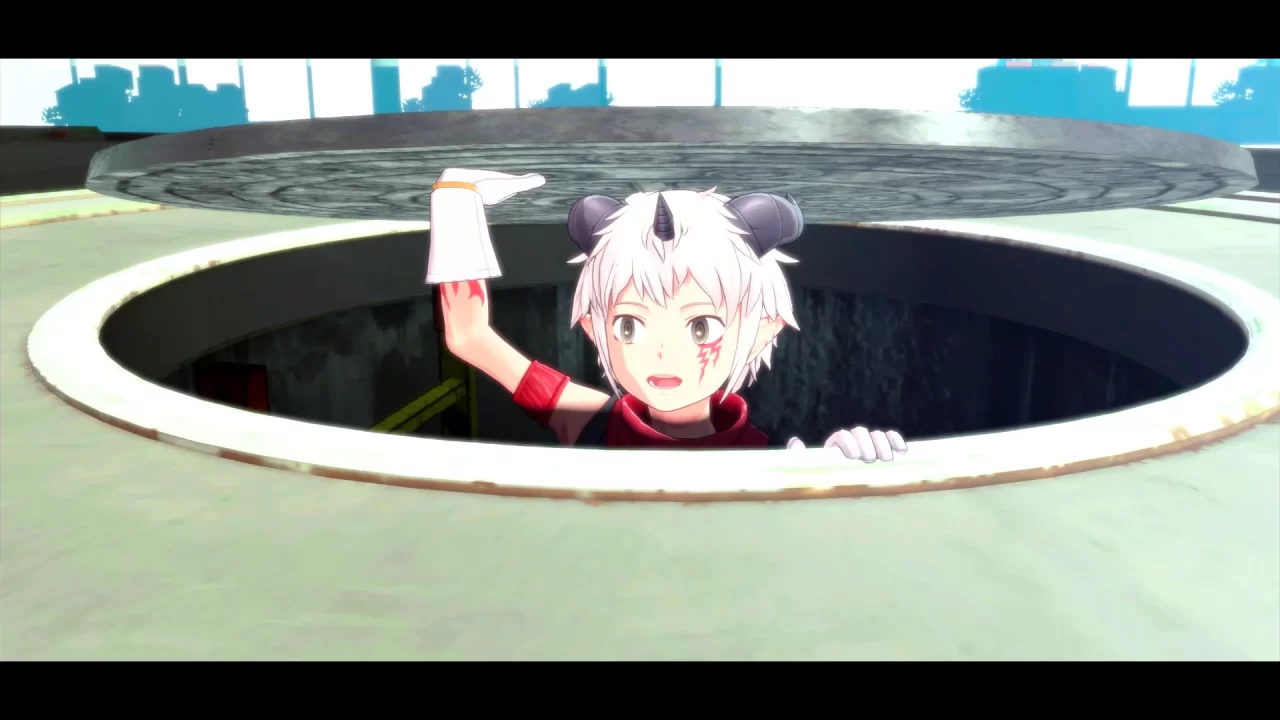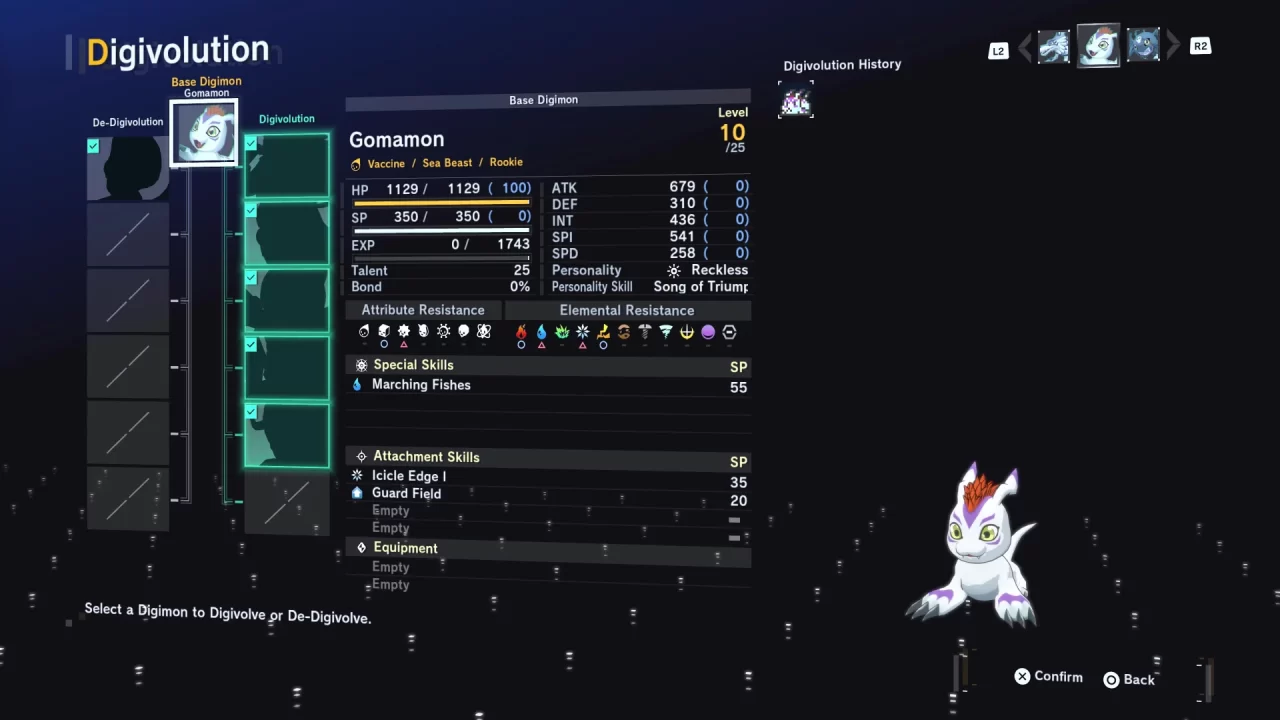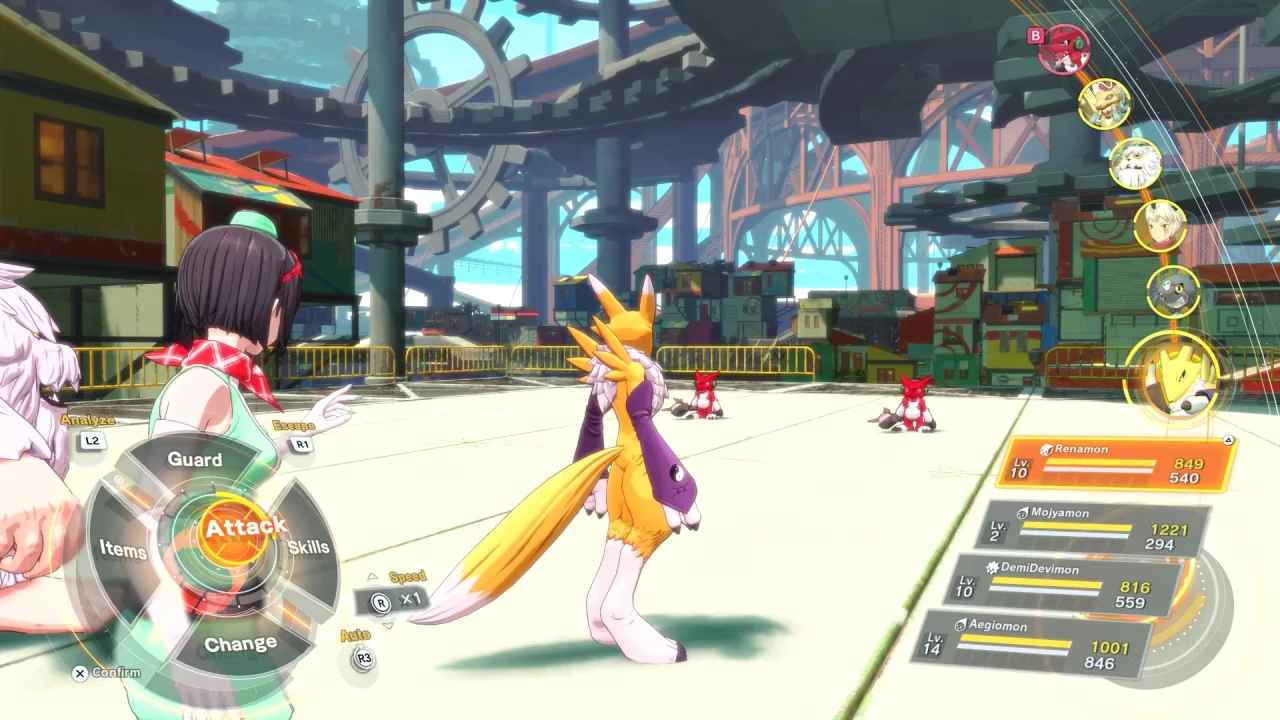The Digimon anime franchise will always hold a special place in my heart: I grew up watching the shows and found their stories about the importance of bonds and connections to be genuinely heartfelt. While the plots lean towards a younger audience, there’s also a universal and timeless quality. My exposure to the Digimon RPGs was severely limited by comparison until monster-taming turn-based RPG Digimon Story: Time Stranger. After spending time with the game, I found a title that plays much like an interactive narrative arc of the beloved series, attempting to grow up alongside its original, mature audience. Time Stranger largely succeeds, providing countless hours of entertainment, yet it’s not without some audience dissonance.
Digimon Story: Time Stranger tells the tale of a secret agent from an agency called ADAMAS, tasked with keeping the world safe from dangerous anomalies. Upon starting, you pick between a male or female protagonist (narratively known simply as “Agent” regardless of how you name them). This decision is essentially superficial, as the plot remains as gender-neutral as possible. While on a mission, Agent encounters strange digital beings described as electron phase lifeforms, better known by the moniker “Digimon.” It isn’t long after that Agent gains the ability to partner with various Digimon they encounter that a disaster occurs, spanning both the human realm and the conflict-soaked Digital World of Iliad, alongside the very fabric of space and time itself. Together with their Digimon partners and a colorful assortment of allies from both worlds, can Agent prevent a reality-ending tragedy?
I don’t want to spoil too much of Digimon Story: Time Stranger‘s plot, as it goes through some pretty hefty twists and reveals that players should experience first-hand. The main characters and their supporting cast of allies, both human and Digimon alike, are largely likable and memorable in various ways. Even many of the antagonists have surprising depth or a compelling reason behind their actions. Time travel tales are often convoluted, and I wouldn’t say Time Stranger differs in that regard, but things manage to play out in a surprisingly satisfactory way despite that.
From a concept stance, Digimon Story: Time Stranger takes the Digimon franchise formula of humans forming bonds with Digimon while going on an adventure to save all existence and runs with it to new heights. Throw in some reality-breaking elements like a Persona Velvet Room-esque area in-between time and space, and the morally complex/ambiguous anti-war messages found in Bandai franchise line Gundam, and you have a rather interesting narrative. In a lot of ways, I appreciate that the story doesn’t dumb down its serious messaging or tone, seemingly matured with the no doubt aging original audience of the Digimon franchise; however, it’s within that very aspect that the title suffers its biggest weakness: the dissonance of just who this RPG means to cater to.
Digimon began as a family-friendly series that could appeal to adventure-seeking children without completely losing its appeal to older audiences, which is why it continues to have a devoted fan base. Digimon Story: Time Stranger approaches its multi-layered tale of bonds, time travel, and conflict with a more mature mindset. In many ways, this is the continuation of a franchise that returning fans have aged alongside. Yet the shadows of its initial, family-friendly form remain. The Digimon themselves often appear cutesy and childish, which could lead someone to dismiss the RPG as kids’ fare. However, the subject matter it covers is far from kid-friendly, with several later plot twists that are triggering and disturbing even for adults. Those wanting the nostalgic adventures of youth will only find slivers here, while those wanting more mature storytelling will similarly only find slivers. Given that, I feel like the actual audience for Time Stranger will be severely limited.
From an RPG stance, Digimon Story: Time Stranger provides a richly detailed and in-depth monster-taming experience. Upon selecting a starting Digimon to help get through the first dungeon, you can add several to your initially limited roster. This addition is initially accomplished by encountering various types of Digimon and fighting them on the field, scanning the digital beings each time you battle them. A higher percentage scan means stronger Digimon once you’ve enough of a percentage to add them to your roster. You can create a party of up to six active Digimon with three actually fighting and three in reserve, switching between them at any point during your turn. Combat is a straightforward, traditional turn-based affair, yet it feels like it goes at a breakneck pace given all the skill-slinging that occurs.
Certain types of Digimon have their own strengths and weaknesses alongside innate skills and stats, though you can provide them with additional skills and stat-boosting gear to help fully augment and customize their arsenal as you see fit. Essential to this is the combat’s Rock-Paper-Scissors type triangle between Digimon: Vaccine type Digimon deal extra damage to Virus, who are effective against Data types, who in turn beat Vaccine types. Once a Digimon reaches specific goals, it can also digivolve to a stronger form (or, if it is a particular Digimon you’re after, you can de-digivolve and attempt a different digivolution phase). Numerous permutations are available depending on a Digimon’s stats, their base personality, and Agent’s rank. As you advance in the game, Agent gains anomaly points, which you can then spend on fairly extensive skill trees that help unlock a new super move during combat or boost stats of the differing Digimon personalities. With so many different approaches to how a Digimon can advance, one could spend hours simply experimenting with the system to gain potent allies.
To further strengthen Digimon, the In-Between Theater you can visit also allows you access to additional Outer Dungeons for experience and awards. You can also place Digimon you aren’t currently using at a digi-farm to undergo training to help further strengthen them or alter personality traits, which in turn changes their stats. It’s a nice touch, albeit perhaps more superfluous than not, depending on your chosen difficulty settings. Aside from advancing the main storyline, you can also partake in numerous side quests. These side quests are of the fetch or battle variety, but offer pretty decent rewards as incentives for completion. Again, you could spend hours attempting to do everything this title offers, especially with its various replayability features. Because there’s so much to see and do, a way to travel between the realms easily without backtracking would’ve been welcome.
Visually, Digimon Story: Time Stranger isn’t terrible-looking, though it does suffer from some budgetary issues. This issue is, namely, apparent in the limited animations for the various Digimon you encounter. I must admit that I’m not the biggest fan of the character designs by Suzuhito Yasuda, but that’s more a personal preference than anything else, and I think they transition well enough to the game’s graphics, regardless. The game’s artwork and its visual presentation are certainly eye-catching! However, the dialogue subtitle UI font can be challenging to read at times, depending on the background’s color and lighting. Soundwise, the English language voice work is decent enough to carry the narrative, and the music effectively bolsters pivotal moments and battles. I especially like the instrumentation and lyrical message behind the sentimental theme song. The script works, and the localization is superb. I only noticed two spelling errors, which is impressive given the amount of dialogue.
Digimon Story: Time Stranger has a lot to offer as a monster-taming RPG. A heartfelt story lies at its core, despite some dissonance regarding its target audience, and the gameplay mechanics are polished and thoroughly entertaining. You could find yourself spending hours and hours playing the game and experimenting with customization alone! I had a great time playing the primary story campaign in particular, and found myself growing to care about the characters. As far as an interactive Digimon experience goes, I think that sentiment proves just how much Digimon Story: Time Stranger ultimately delivers.






